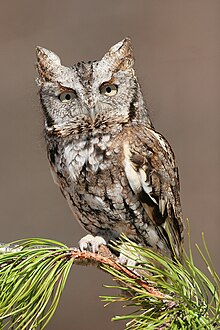전갈자리 에타
Eta Scorpii| 관측 데이터 에폭 J2000 이쿼녹스 J2000 | |
|---|---|
| 별자리 | 전갈자리 |
| 우측 상승 | 17h 12m 09.19565s[1] |
| 탈위임 | –43° 14′ 21.0905″[1] |
| 겉보기 크기(V) | 3.33[2] |
| 특성. | |
| 스펙트럼형 | F5 IV[3] |
| U-B색지수 | +0.09[2] |
| B-V색지수 | +0.41[2] |
| 아스트로메트리 | |
| 방사 속도(Rv) | –27.0km[4]/s |
| 적정운동(μ) | RA: +24.47[1]mas/yr Dec.: –288.55[1]mas/yr |
| 시차(시차) | 44.39 ± 0.16 마스[1] |
| 거리 | 73.5 ± 0.3 ly (22.53 ± 0.08 pc) |
| 절대치수(MV) | +1.58[5] |
| 세부사항[6] | |
| 미사 | 1.75[7] M☉ |
| 반지름 | 3.307±0.050 R☉ |
| 루미도 | 17.94±0.45 L☉ |
| 표면 중력(log g) | 3.65±0.20 cgs |
| 온도 | 6,533±46 K |
| 금속성 [Fe/H] | −0.29±0.10 덱스를 만들다 |
| 회전 속도(v sin i) | 150.00km/s |
| 나이 | 1.1[5] Gyr |
| 기타 지정 | |
| 데이터베이스 참조 | |
| 심바드 | 자료 |
에타 전갈자리 에타 전갈자리(Eta Sculpii)는 전갈자리 남쪽 별자리에 있는 별이다.겉으로 보이는 시각적 크기가 3.33인 이곳은 전갈자리 중 가장 밝은 구성원 중 하나이며, 바이엘(Bayer)으로 명명된 별자리 중 가장 남쪽에 있는 별자리 중 가장 먼 곳이다.[2][9]이 별까지의 거리는 시차 측정을 통해 추정할 수 있으며 오차범위가 0.4%인 73.5광년(22.5파섹)의 값을 얻을 수 있다.[1]
이 별의 별 분류는 시간이 지남에 따라 어느 정도 수정을 거쳤으며, 그 별은 F형 주계열성에서 거성으로 분류된다.[8]2006년에 NStars 프로그램은 그것을 F5 IV 등급으로 할당했는데,[3] 여기서 'IV'의 발광 등급은 이것이 중심부의 수소 공급을 소진하고 있고 거대한 별로 진화하는 과정에 있는 아거성 별임을 나타낸다.태양 질량의 약 175%[7]를 가지고 있으며 추정 연령은 11억년이다.[5]이 별은 6,533 K의 유효 온도에서 외부 대기에서 태양의 18배 정도의 광도를 발산하고 있다.[6]F형 별의 전형인 황백색을 띠게 하는 것이 바로 이 더위다.[10]
에타 전갈자리 빠르게 회전하고 있으며, 예상 회전 속도는 150km이다−1.[7]이로 인해 항성은 하루 미만의 기간으로 축 위에서 회전하고 있다.[11]항성 코로나가 4.4×1028 에르그의−1 X선 광도를 내는 X선 방출기다.[12]1991년에 그것은 그것의 스펙트럼에서 원소 바륨의 강화된 풍부함을 보여주기 때문에 가능한 바륨 별로 확인되었다.[13]전반적으로 천문학자들이 별의 야금성이라고 부르는 수소와 헬륨 이외의 원소의 풍부함은 태양의 풍부함과 비슷하다.[5]
참조
- ^ a b c d e f van Leeuwen, F. (November 2007), "Validation of the new Hipparcos reduction", Astronomy and Astrophysics, 474 (2): 653–664, arXiv:0708.1752, Bibcode:2007A&A...474..653V, doi:10.1051/0004-6361:20078357, S2CID 18759600
- ^ a b c d Bok, B. J.; Bok, P. F.; Miller, E. W. (November 1972), "Photometric standards for the southern hemisphere. II", Astronomical Journal, 77: 733, Bibcode:1972AJ.....77..733B, doi:10.1086/111346
- ^ a b Gray, R. O.; et al. (July 2006), "Contributions to the Nearby Stars (NStars) Project: Spectroscopy of Stars Earlier than M0 within 40 pc-The Southern Sample", The Astronomical Journal, 132 (1): 161–170, arXiv:astro-ph/0603770, Bibcode:2006AJ....132..161G, doi:10.1086/504637, S2CID 119476992
- ^ Evans, D. S. (June 20–24, 1966), "The Revision of the General Catalogue of Radial Velocities", in Batten, Alan Henry; Heard, John Frederick (eds.), Determination of Radial Velocities and their Applications, Proceedings from IAU Symposium no. 30, University of Toronto: International Astronomical Union, Bibcode:1967IAUS...30...57E
- ^ a b c d Holmberg, J.; Nordstrom, B.; Andersen, J. (July 2009). "The Geneva-Copenhagen survey of the solar neighbourhood. III. Improved distances, ages, and kinematics". Astronomy and Astrophysics. 501 (3): 941–947. arXiv:0811.3982. Bibcode:2009A&A...501..941H. doi:10.1051/0004-6361/200811191. S2CID 118577511.
- ^ a b Rains, Adam D.; et al. (April 2020), "Precision angular diameters for 16 southern stars with VLTI/PIONIER", Monthly Notices of the Royal Astronomical Society, 493 (2): 2377–2394, arXiv:2004.02343, Bibcode:2020MNRAS.493.2377R, doi:10.1093/mnras/staa282
- ^ a b c Mallik, Sushma V.; Parthasarathy, M.; Pati, A. K. (October 2003), "Lithium and rotation in F and G dwarfs and subgiants", Astronomy and Astrophysics, 409: 251–261, Bibcode:2003A&A...409..251M, doi:10.1051/0004-6361:20031084
- ^ a b "LTT 6848 -- High proper-motion Star", SIMBAD, Centre de Données astronomiques de Strasbourg, retrieved 2012-02-10
- ^ Burnham, Robert (1978), Burnham's celestial handbook: an observer's guide to the universe beyond the solar system, Dover books explaining science, vol. 3 (2nd ed.), Courier Dover Publications, p. 1675, ISBN 0-486-23673-0
- ^ "The Colour of Stars", Australia Telescope, Outreach and Education, Commonwealth Scientific and Industrial Research Organisation, December 21, 2004, retrieved 2012-02-10[영구적 데드링크]
- ^ Kaler, James B., "Eta Scorpii", Stars, University of Illinois, retrieved 2012-02-10
- ^ Pizzolato, N.; Maggio, A.; Sciortino, S. (September 2000), "Evolution of X-ray activity of 1-3 Msun late-type stars in early post-main-sequence phases", Astronomy and Astrophysics, 361: 614–628, Bibcode:2000A&A...361..614P
- ^ Lu, Phillip K. (June 1991), "Taxonomy of barium stars", Astronomical Journal, 101: 2229–2254, Bibcode:1991AJ....101.2229L, doi:10.1086/115845



